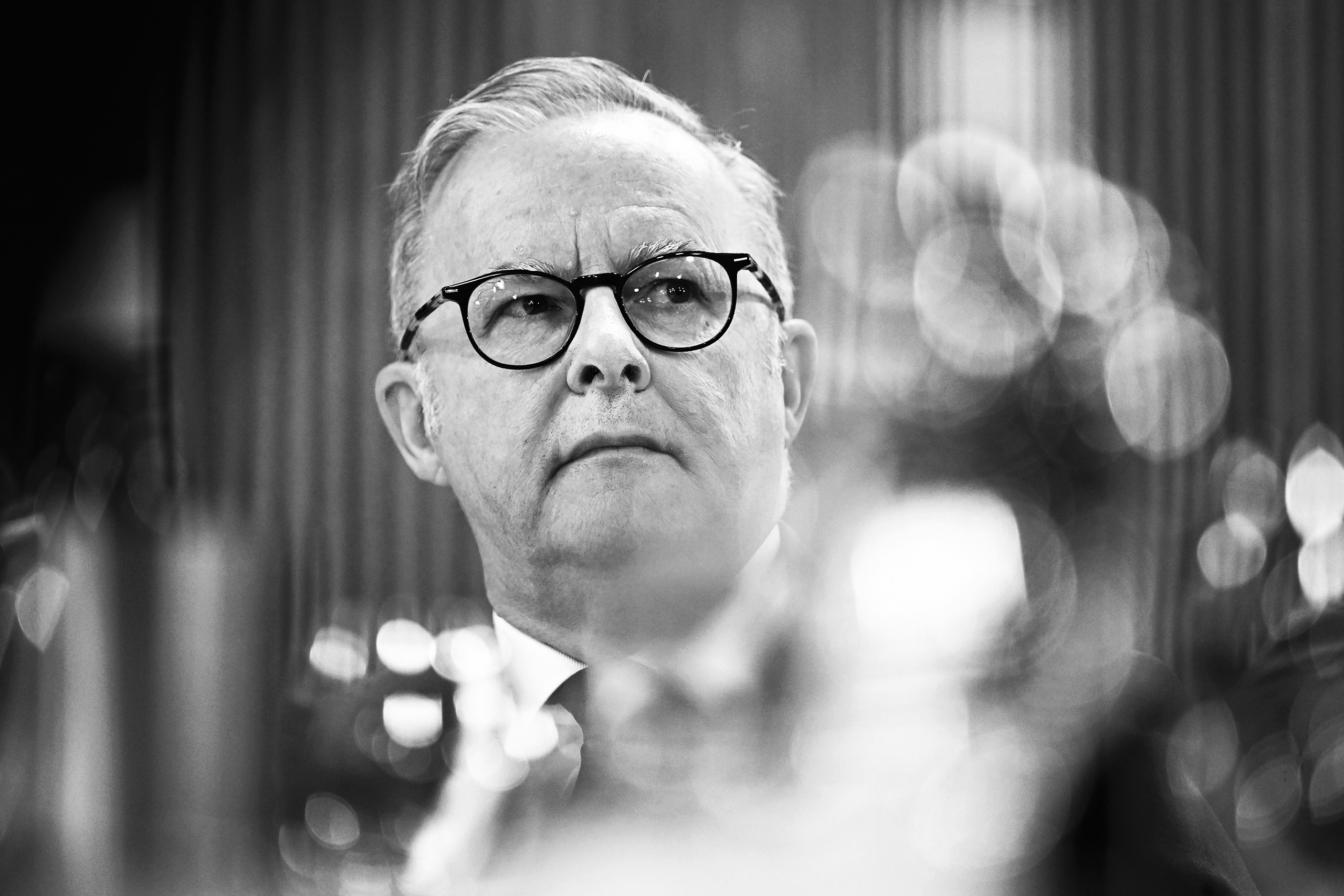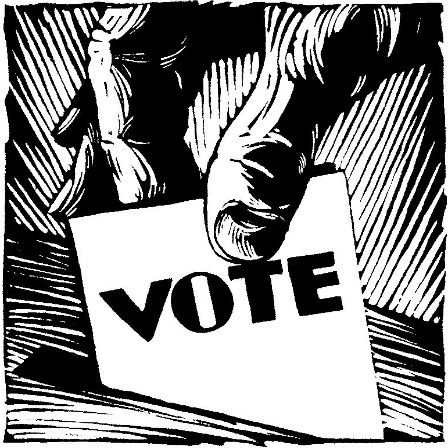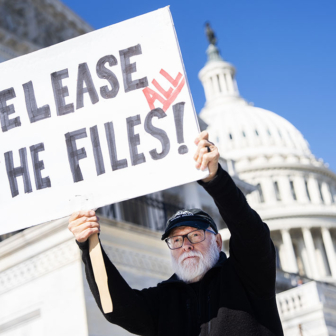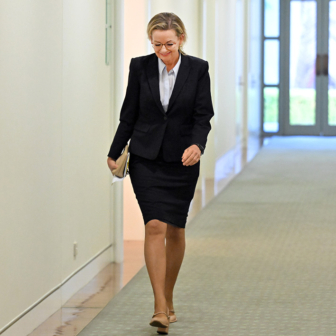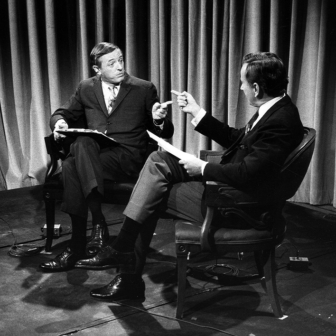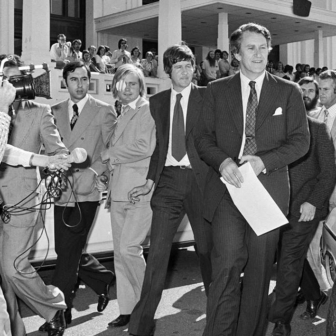Last Wednesday Labor’s national secretary, Paul Erickson, delivered the traditional election winner’s speech at Canberra’s National Press Club. This opportunity to exercise bragging rights and feed journalists the government’s preferred narratives about what happened and why is as longstanding as it is ritualistic. Playing with the defeated team’s heads is a priority. A high-impact example was Liberal director Andrew Robb’s spreading the gospel of “Howard’s battlers” in 1996, a psephologically fake narrative that infects political discourse to this day.
Although Erickson’s remarks were naturally self-serving, some were still interesting and informative. But there was a glaring omission: the role of Donald Trump in Labor’s win. In fact the American president got not one mention in the transcript.
The party boss did make a quick reference to “Liberation Day” (when Trump’s tariff announcement sent the global financial market and news cycles into a tizz), but only as part of a list of events about which Peter Dutton apparently “never missed an opportunity to miss an opportunity.” (The opposition made some clearly identifiable blunders during the campaign, but I can’t recall his reaction to this being one of them.)
Erickson also confided that internal polling had Labor comfortably ahead at the end of the first week of the campaign, and that it remained ahead after that. America’s “Liberation Day,” as it happens, fell in week one.
It’s no surprise that the conquerors would wish to downplay luck as an ingredient in their heroic achievement. But starting on the night of 3 May, commentators, journalists, party insiders and outsiders — virtually everyone with an opinion on politics — seemed to forget what they knew until a few hours before: that Trump was a major part of the Labor government’s revival. This mass forgetting extends across all the media, from the Guardian and Crikey to News Corp. The story of the Liberal Party’s woes is just too compelling.
We are all used to the dynamic: after a clear election outcome, everything the victor did is seen as awesome while the losing campaign was an endless fiasco of missteps and misjudgements. The media demands stories and so everything — good analysis, poor analysis, score-settling, thought bubbles and unbelievable nonsense — is welcomed into the mix. Let a thousand post-mortems bloom, and if it means totally upending what was written or uttered by the same observer only weeks or months ago, so be it.
And so it is now clear that Anthony Albanese always knew what he was doing and Labor as an institution possesses an unsurpassed understanding of Australians. The sexier story is, of course, the Coalition, whose flaws are now glaringly, embarrassingly on show: disorganised, burdened by poor candidates, philosophically estranged from the electoral mainstream, riven by irreconcilable conflicts between urban and rural voter bases.
Liberal MPs, trapped in the Sky After Dark ecosphere, feel obliged to placate a rabidly ideological party membership on matters of “culture.” The Nationals, meanwhile, pull the party even further to the right — and then in a neat twist get to gloat about their own relatively good electoral performance among the small subsection they represent.
Dutton in particular, with his longstanding tendency to get sidetracked by niche ideological crusades and his conviction that punching down on minorities delivers electoral nirvana, was precisely the wrong leader for the times.
All of these criticisms of the Coalition parties are valid. But they’ve been valid for many years. It didn’t stop the Coalition winning three elections on the trot not too long ago.
And only a few years have passed since it was the diametrically opposed interests of Labor’s twin bases — inner-city progressives and outer suburban/regional blue-collar “battlers” — that appeared insurmountable. Then they won office anyway, and no one talks about those problems anymore.
Still, the 2025 win was one out of the box in several ways. First of all was the sheer size of Labor’s national two-party-preferred vote and its highest proportion of House seats since 1943 — although the win is several rungs lower on the list of postwar landslides for either side, easily eclipsed by Malcolm Fraser’s 1975 and 1977 demolitions of Gough Whitlam and Labor. But today’s losing side has only one postwar straw to clutch: Labor emerged in 1975 with a slightly lower proportion of House seats.
Labor won the primary vote for the first time since 2007, and by a margin not seen since Bob Hawke took office in 1983. But the total major-party primary vote continued its sputtering decades-long slide — although the crossbench shrank this time, thanks mostly (or solely, depending on the Bradfield result) to the fall of three Greens seats to the government.
But where 2025 really stands out is the unprecedented level of revisionism. We all remember the effect “Liberation Day” had on the polls, and on Australians’ attitudes to the products on offer in the upcoming contest. Don’t we?
Yes, green shoots for the government were spotted in public polling before that, throughout March. It’s hard to knock off a first-term government because it’s usually difficult to blame them successfully for all the country’s woes. And the Coalition was as never as far ahead in earlier polling as some commentators seem to recall. (It peaked at around 51 per cent after preferences.)
But Labor’s measured support jumped after 2 April, and some surveys specifically pointed to Trump as a major driver. Dutton’s ideologically charged public persona and his recent praise for the American president, and the behaviour of high-profile colleagues including Jacinta Nampijinpa Price and, less famously, Michaelia Cash, simply came at the wrong time and place. Even at the time, Dutton’s January promise of an Australian DOGE, with Price as its head, was obviously bonkers.
It was a perfect storm.
The long-term dynamic is not that Labor is the natural party of government or that the Coalition is unelectable, but that the two-party system continues its decline. That fact will outlast the swings and roundabouts, off lower and lower primary support, between the pair. Labor will be out of office one day, and what will its primary vote look like then?
It is difficult to see the Coalition being anything other than the very right-wing outfit they are today at the 2028 election. The party-room numbers simply dictate it, and when current leader Sussan Ley hits turbulence she will feel the need to mollify her internal enemies and showcase her Sky After Dark credentials.
Still, one of the worst takes from this month’s result is that it all but guarantees Labor will be re-elected next time. Elections are discrete events. Three years is a long time. On 3 May, international developments turned a likely run-of-the-mill Labor victory into a huge one as voters flocked, directly or via preferences, to the safety of the centre-left incumbent. The global roiling looks set to continue for at least the next three years; America’s presidential election (if there is one) will take place after our next one.
Who knows what the world will throw at us over the next three years? •
